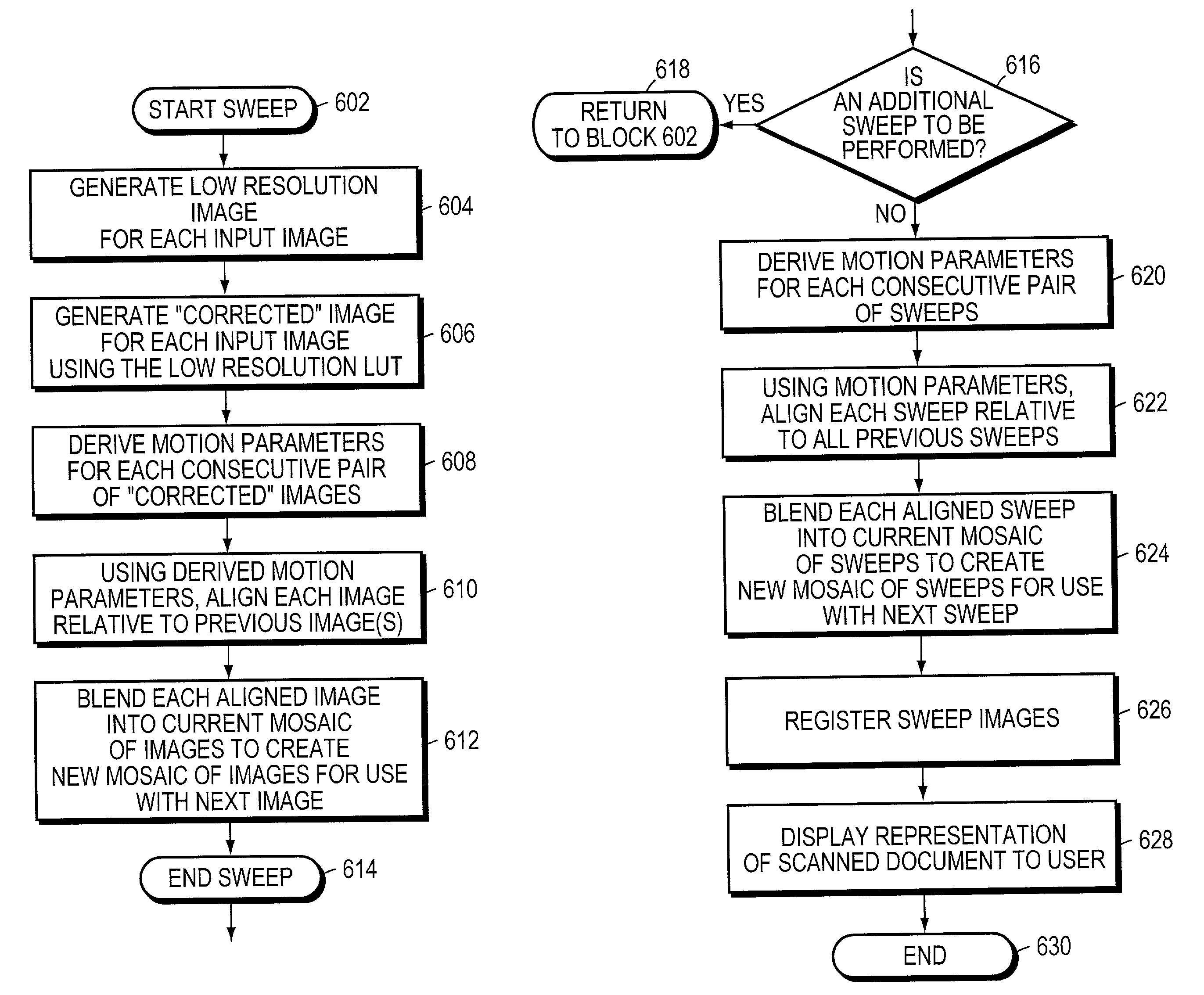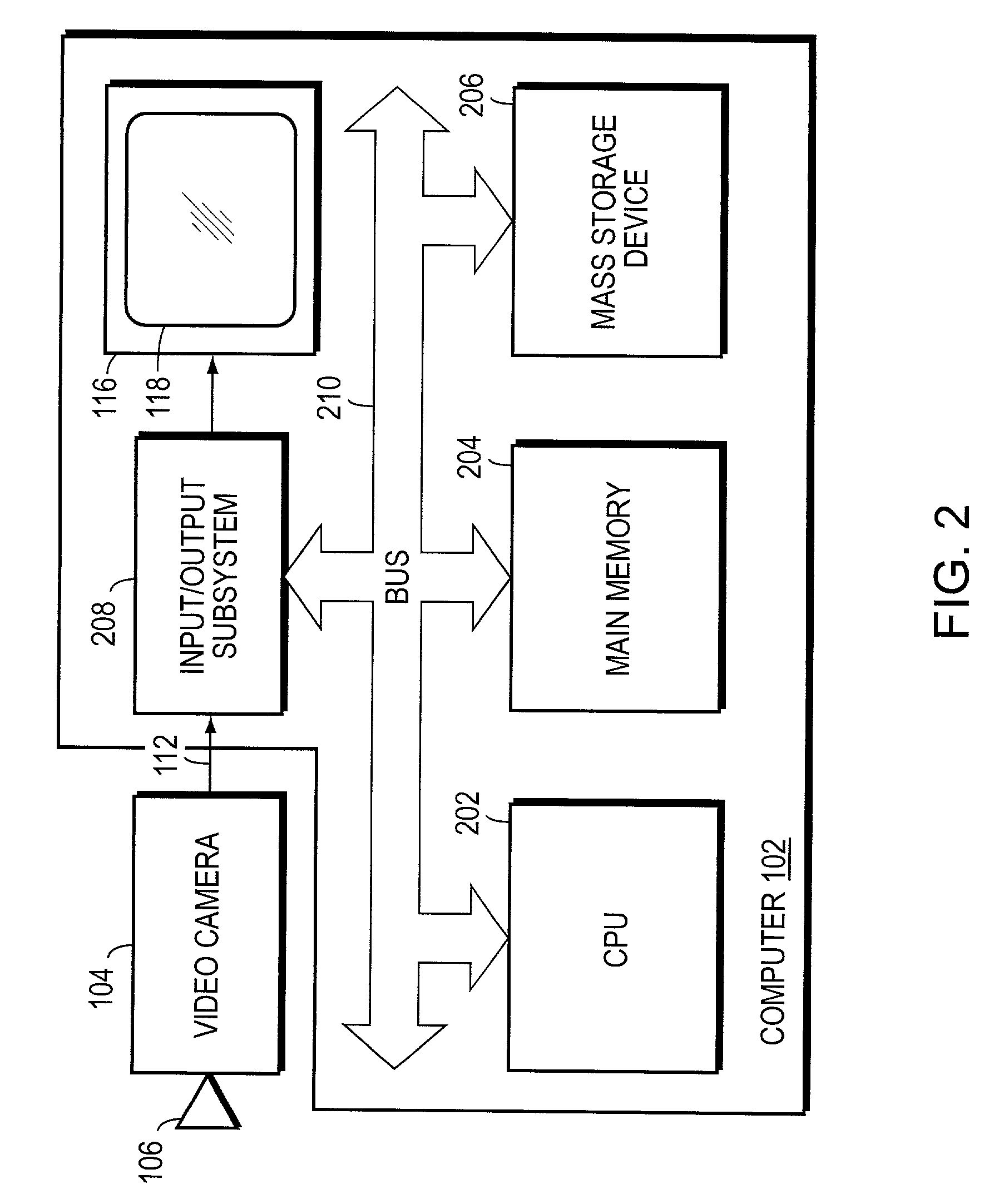Camera-based document scanning system using multiple-pass mosaicking
a document scanning and camera-based technology, applied in the field of camera-based document scanning system, can solve the problems of flat-bed scanners, still relatively expensive, and large volume of flat-bed scanners, and achieve the effects of improving image quality, improving image quality, and improving image quality
- Summary
- Abstract
- Description
- Claims
- Application Information
AI Technical Summary
Problems solved by technology
Method used
Image
Examples
Embodiment Construction
[0019]FIG. 1 is a highly schematic illustration of an environment 100 employing the present invention. The environment 100 includes a computer, such as a personal computer 102, a video camera 104 having a lens 106 and a document 108 to be scanned. In a preferred embodiment, the video camera 104 is mounted upon a stand 110 such that the lens 106 is pointing in a downward direction. The stand 110 preferably includes a base 110a. The video camera 104 is also coupled to the computer 102 so that image frames captured by the video camera 104 may be transmitted to and received by the computer 102. For example, the camera 104 may be connected by a cable 112 to a Universal Serial Bus (USB) interface 114 of the computer 102. The computer 102, moreover, preferably includes a monitor 116 having a display screen 118. The computer 102, document 108 and camera stand may all be disposed on a desk 120 having a relatively flat surface 120a
[0020]FIG. 2 is a highly schematic, block diagram of the comp...
PUM
 Login to View More
Login to View More Abstract
Description
Claims
Application Information
 Login to View More
Login to View More - R&D
- Intellectual Property
- Life Sciences
- Materials
- Tech Scout
- Unparalleled Data Quality
- Higher Quality Content
- 60% Fewer Hallucinations
Browse by: Latest US Patents, China's latest patents, Technical Efficacy Thesaurus, Application Domain, Technology Topic, Popular Technical Reports.
© 2025 PatSnap. All rights reserved.Legal|Privacy policy|Modern Slavery Act Transparency Statement|Sitemap|About US| Contact US: help@patsnap.com



